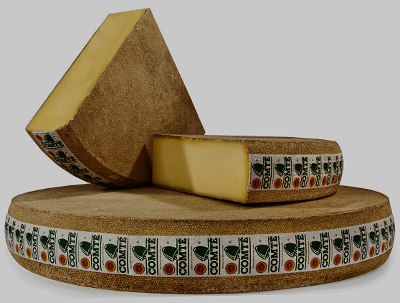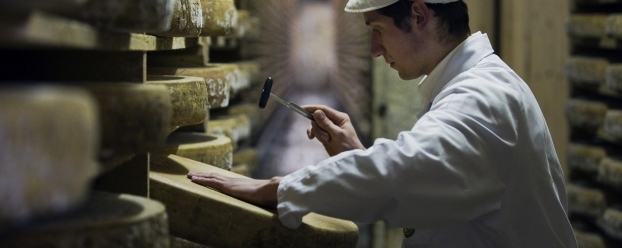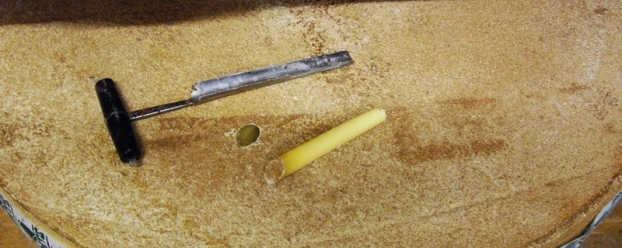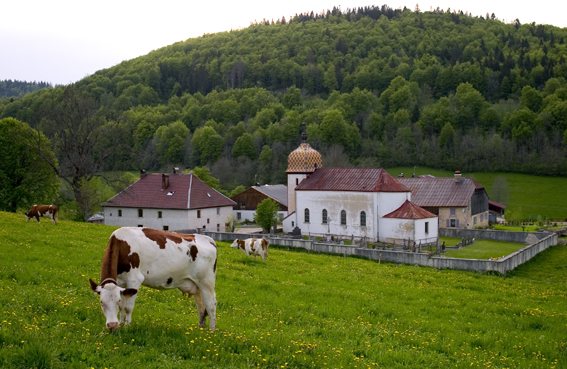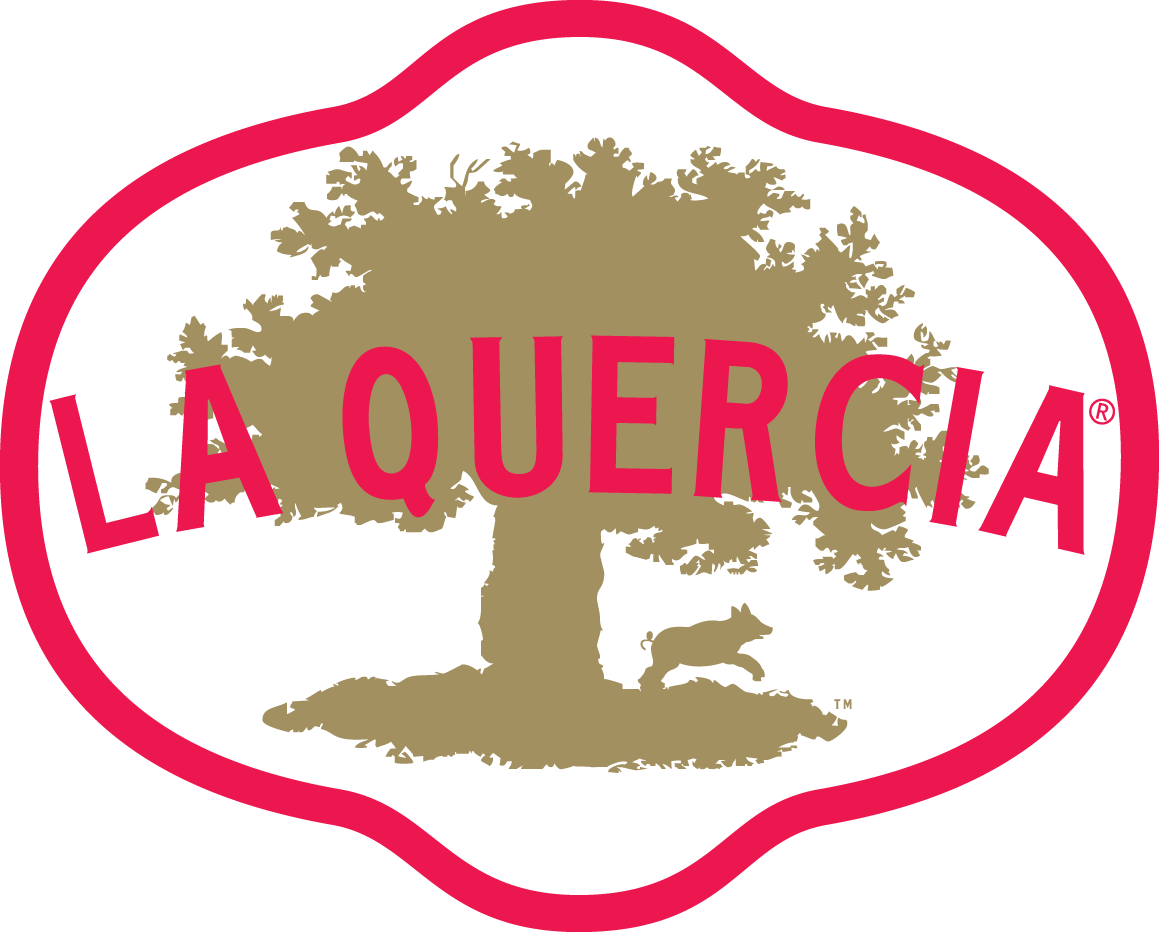In eastern France lies an important historical cheese producing region called the Jura Massif. This stunning mountain region stretches between Jura and Doubs in Franche-Comté, and Ain in the Rhones-Alpes. It is home to over 3,000 family farms dedicated to producing the highest quality raw milk that is required to make Comté cheese.
Comté is an AOC (Controlled Appellation of Origin) raw milk cheese that has been made for at least one thousand years. Its unique flavors and characteristics are derived from traditional production methods that reflect the culture and the environment of the region. One could say the AOC classification acts as a contract between farmers, fruitières (dairy farmers), affineurs and their customers to maintain the taste and natural character of Comté.
An AOC cheese classification regards the traditional cheese making methods, the regional environmental specifications and the animal that produces the milk. Comte has been AOC protected since 1958. The milk must come from 95% Montbeliardes breed and 5% French Simmental. This guideline is, in my opinion, the most important in respecting the flavor and quality of the milk to produce a Comte cheese that will be true to its origins. Each cow is given a whole hectare of pasture land in the summer months. They are free to feed on a natural grass diet. At the end of Autumn, the cows return to the stable where they can feast on locally harvested hay, which helps to maximize Comté’s delicious aromatic potential. Any fermented feed such as sileage is prohibited because it adversely affects the quality of the milk which is used raw. Comté has also refused GMOs and presents all guarantees in respect of the product.
3000 family farms that are legally allowed to produce milk used to make Comte are part of a co-operative that support about 150 village dairies. Every day this tradition repeats itself. The milk is partly skimmed and warmed in copper pots to create the curd. This curd is then pressed to remove excess liquid and placed in a mold to release the whey and press the wheels. The freshly made wheels are then preripened for a few weeks before being moved to one of the 16 maturing cellars. In order to maintain this natural process, additives and colorings are prohibited at any stage of the process. Over time a crust (hard rind) appears and every Comté wheel develops its unique smooth texture, rich color and delicious range of flavors.
The affineurs look after the wheels for 4 to 18 months or more; regularly turning, salting and rubbing each one with brine solution. After 4 months each round is tested and marked on its taste and shape. Those scoring over 14 points are given the green band representing excellent quality. Rounds given between 12-14 points will be given a brown band. And rounds that score less than 12 are excluded from carrying the official label. Only the best will do when it comes to putting Comté on your plate.
Similar to its Swiss cousins, Gruyere and Emmenthaler, Comte shares a meltability and flavor profile of nuts, roasted onions and caramel notes. These awesome characteristics make it an extremely versatile cheese. Comte lends itself to the best cheese sauce recipes, fondues, grilled cheese sandwiches, mac and cheese, casseroles and so much more. In addition to being a great cooking cheese, it is delicious on its own and eaten out of hand or on a cheese plate with mustard and nuts.
WHAT GOES WITH MY CHEESE
Because I love using Comte in recipes..... Comte and tomato tart recipe
The best wines for French cheeses tend to be from the same regions so I highly recommend having Comte with a red wine from the Jura region. Look for Arbois, which is the wine appellation for the region. In that area you may find red and rose wines produced from Poulsard, Troussaeu and Pinot Noir grapes. If Arbois is harder to find, look for a red Burgundy or Red Rhone.
If wine is not your preference, try Comte with the Westmalle Trappist Ale. The nutty and earthy character in Comte is a perfect complement to the roasted nut flavors found in this beer.
If you prefer to serve Comte on a cheese plate, serve it with savory, pickled and salty foods like olives, cornichons, and salamis.
Check out this link to another great blog article about Comte.
http://www.thekitchn.com/why-french-comt-cheese-needs-to-be-in-your-fridge-comt-cheese-tour-206217
Cheese name: Comte
Producer: many producers
Where: Jura regions in France
Size: large format 100lb wheels but can be found sold by weight in small chunks
Cheese category: Alpine cooked and pressed cheese
Milk: unpasteurized cow's milk

